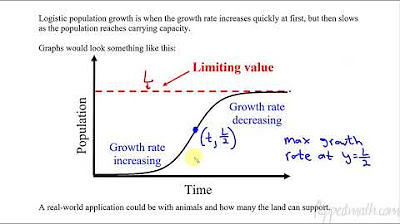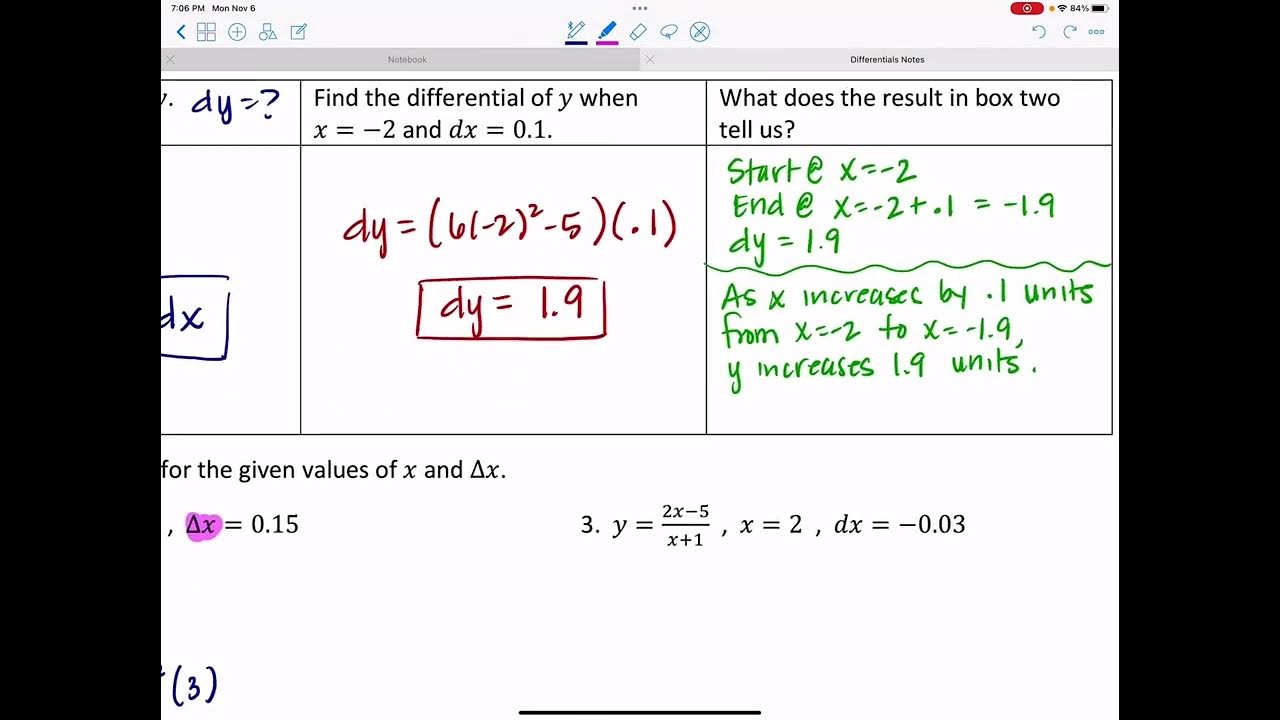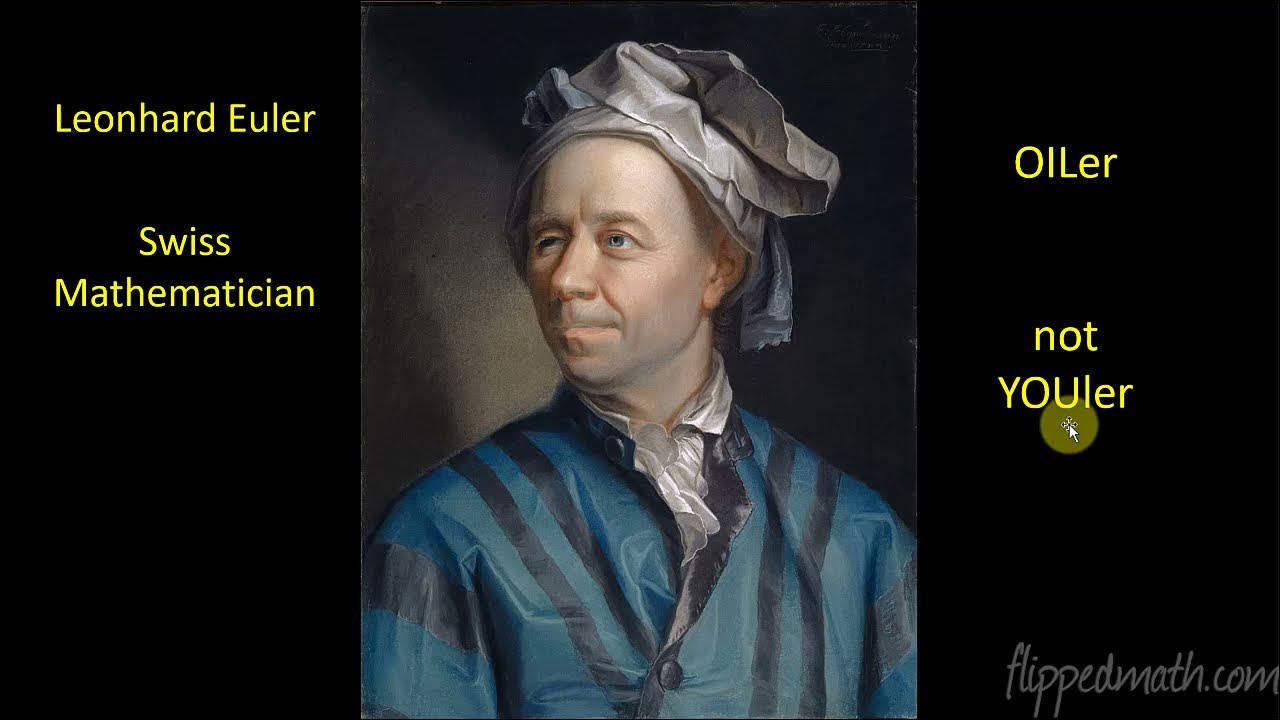Calculus AB/BC – 7.1 Modeling Situations with Differential Equations
TLDRThis engaging calculus lesson introduces students to differential equations, emphasizing their role in modeling various real-world situations. The instructor begins by defining differential equations as equations involving rates of change, such as dy/dx, and explains the concept of proportionality, distinguishing between direct and inverse relationships. The lesson progresses with practical examples: a differential equation representing the rate of change of a variable 'y' with respect to 'x', the force exerted by a stretched spring related to its distance 'd', and the position of a swimmer 'Mr. Brust' in relation to time 't'. Each example illustrates how to set up differential equations, with the latter two involving finding the constant of proportionality and using Leibniz notation for acceleration. The summary concludes with encouragement for students to master the concepts presented, promising a straightforward and successful learning experience.
Takeaways
- 📚 A differential equation involves a rate of change and is represented as dy/dx = some expression.
- 🔍 Direct proportionality means one variable is a constant times another, written as a ∝ b or a = k * b, where k is the constant.
- 🔄 Inverse proportionality indicates one variable is a constant divided by another, written as a ∝ 1/b or a = k/b, with k being the constant.
- 🌟 When setting up a differential equation, the specific values of variables like 't' and 'dw/dx' are not required unless specified.
- ⚖️ For a spring's force (F) related to its stretch distance (d), the rate of change of F with respect to d is inversely proportional to the natural logarithm of d.
- 📐 Given the rate of change of F (3 units per centimeter) and a specific distance (0.2 cm), we can solve for the constant of proportionality (k).
- 🏊♂️ Mr. Brust's swimming example involves acceleration, which is the second derivative of position with respect to time, written in Leibniz notation as d^2p/dt^2.
- 🏊♂️ Mr. Brust's acceleration is proportional to the cube root of time since the start of his swim, which is a unique type of proportionality.
- 🧮 Leibniz notation is crucial when dealing with derivatives higher than the first order, such as velocity or acceleration.
- 📈 Understanding the difference between roots and powers is essential, as cube root and cubed are not the same operation.
- 🎯 Mastery of setting up and solving differential equations is a key skill in calculus, applicable to various real-world problems.
Q & A
What is a differential equation?
-A differential equation is a mathematical equation that involves a function and its derivatives, describing a relationship where the rate of change is equal to some expression.
What is meant by direct proportionality in mathematics?
-Direct proportionality means that two quantities are related such that one is a constant times the other. If 'a' is directly proportional to 'b', it can be expressed as 'a = k * b', where 'k' is a constant.
How is inverse proportionality different from direct proportionality?
-Inverse proportionality indicates that as one quantity increases, the other decreases in such a way that their product is a constant. If 'a' is inversely proportional to 'b', it can be expressed as 'a = k / b', where 'k' is a constant.
What is the differential equation representing the rate of change of 'y' with respect to 'x' when 'y' is directly proportional to the product of 't' and the rate of change of 'w' with respect to 'x'?
-The differential equation is expressed as 'dy/dx = k * t * (dw/dx)', where 'k' is the constant of proportionality.
How is the force 'F' on a spring related to the distance 'D' it is stretched, according to the given script?
-The force 'F' on a spring is inversely proportional to the natural logarithm of the distance 'D' it is stretched. This relationship can be expressed as 'dF/dd = k * (1 / ln(D))', where 'k' is the constant of proportionality.
What is the significance of the given rate of change of force being three units per centimeter?
-The given rate of change of force being three units per centimeter allows us to solve for the constant of proportionality 'k' in the differential equation, using the provided stretched distance.
How can you find the constant of proportionality 'k' in the spring force example?
-You can find the constant 'k' by setting the given rate of change equal to the expression involving 'k' and the natural logarithm of the distance, and then solving for 'k'.
What is the differential equation for Mr. Brust's swimming scenario where his acceleration is proportional to the cube root of time?
-The differential equation for Mr. Brust's acceleration is 'd²p/dt² = k * (t^(1/3))', where 'k' is the constant of proportionality and 't' is the time since the start of his swim.
What notation is used to represent the second derivative of a function in differential equations?
-The Leibniz notation is used to represent the second derivative of a function, which is written as 'd²y/dx²'.
Why is it important to distinguish between different roots and powers when setting up differential equations?
-It is important to distinguish between roots and powers because they represent different mathematical operations. For example, a square root and a squared value have different effects on the variable, and this distinction must be accurately reflected in the differential equation for it to be correct.
What should you do if a differential equation problem does not provide enough information to determine the constant of proportionality?
-If a problem does not provide enough information to determine the constant of proportionality, you can still set up the differential equation with 'k' as an unknown constant. Additional data or boundary conditions may be needed to solve for 'k'.
Outlines
📚 Introduction to Differential Equations and Proportionality
This paragraph introduces the topic of differential equations, which are mathematical equations involving rates of change. It explains that differential equations can model various situations and emphasizes the importance of understanding proportional relationships, both direct and inverse. The direct proportionality is represented by a constant times a variable, while inverse proportionality is denoted by a variable being proportional to the reciprocal of another. The paragraph then applies these concepts to set up differential equations for given scenarios, such as the rate of change of 'y' with respect to 'x' and the force of a spring related to its stretched distance.
🤔 Setting Up Differential Equations for Specific Scenarios
The second paragraph delves into setting up differential equations for specific physical scenarios. It begins with a problem involving the rate of change of force on a trampoline, which is inversely proportional to the natural logarithm of the distance it is stretched. The paragraph provides additional information, such as the rate of change of force being three units per centimeter, and uses this to solve for the constant of proportionality 'k'. The solution process is demonstrated, leading to the formulation of the differential equation for this scenario. The paragraph also covers the concept of Leibniz notation for derivatives, particularly for acceleration, which is the second derivative of position with respect to time squared. It concludes with an example involving Mr. Brust's swimming acceleration, which is proportional to the cube root of time since the start of his swim, highlighting the need to distinguish between different mathematical operations like squaring and square rooting.
Mindmap
Keywords
💡Differential Equation
💡Proportionality
💡Direct Proportional Relationship
💡Inverse Proportional Relationship
💡Rate of Change
💡Natural Logarithm
💡Leibniz Notation
💡Acceleration
💡Cube Root
💡Constant of Proportionality
💡Second Derivative
Highlights
Introduction to a new unit on differential equations, which model various situations involving rates of change.
Definition of a differential equation as an equation involving a rate of change.
Review of proportionality concepts, including direct and inverse proportional relationships.
Setting up a differential equation for a scenario where the rate of change of y with respect to x is directly proportional to t and the rate of change of w.
Explanation of how to represent direct proportionality using a constant k and multiplication.
Introduction of a problem involving the force on a spring, which is inversely proportional to the natural logarithm of the distance it is stretched.
Use of the natural logarithm in the differential equation to represent inverse proportionality.
Given information about the rate of change of force (3 units per centimeter) to solve for the constant of proportionality k.
Calculation of the constant k using the natural logarithm of a given distance (0.2 centimeters).
Derivation of the differential equation for the force on a spring using the determined value of k.
Discussion of Mr. Brust's swimming scenario, involving acceleration proportional to the cube root of time since the start of his swim.
Use of Leibniz notation for the second derivative to represent acceleration in differential equations.
Clarification on the difference between cube root and cubed, and square root and squared in mathematical notation.
Emphasis on the importance of understanding Leibniz notation for functions involving velocity or acceleration.
Encouragement for students to master the lesson, highlighting the straightforward nature of the content.
Anticipation of the next lesson, indicating a continuation of the topic.
Transcripts
Browse More Related Video
5.0 / 5 (0 votes)
Thanks for rating:





